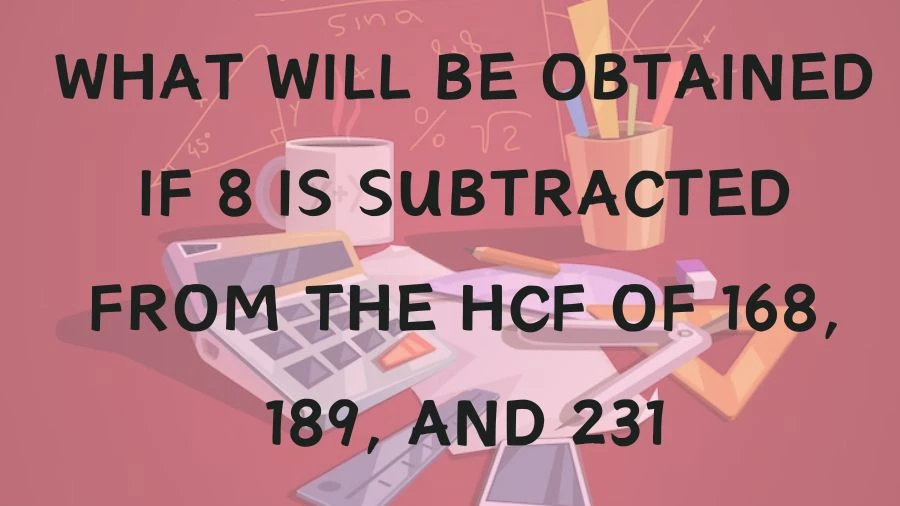If you happen to be viewing the article What will be obtained If 8 is Subtracted from the HCF of 168, 189, and 231? ? on the website Math Hello Kitty, there are a couple of convenient ways for you to navigate through the content. You have the option to simply scroll down and leisurely read each section at your own pace. Alternatively, if you’re in a rush or looking for specific information, you can swiftly click on the table of contents provided. This will instantly direct you to the exact section that contains the information you need most urgently.
See what happens when we subtract 8 from the shared factor of 168, 189, and 231 – it’s like a math puzzle with interesting results.
What will be obtained If 8 is Subtracted from the HCF of 168, 189, and 231?
13 will be obtained if 8 is subtracted from the HCF of 168, 189, and 231.
Explanation
To find the Highest Common Factor (HCF) of 168, 189, and 231, we can use the prime factorization method or the division method.
Prime factorization:
- Prime factorization of 168: 23×3×7
- Prime factorization of 189: 33×7
- Prime factorization of 231: 3×7×11
Now, to find the HCF, we take the common prime factors with the lowest powers: (168,189,231) = 3×7 = 21
If we subtract 8 from the HCF: 21−8 = 13
So, if 8 is subtracted from the HCF of 168, 189, and 231, the result is 13.
What is Number Theory?
Number theory is a branch of pure mathematics that deals with the properties and relationships of numbers, particularly integers. It is one of the oldest branches of mathematics and has a rich history that dates back to ancient times. Number theory explores the fundamental nature of numbers and focuses on understanding the properties and patterns that arise within the set of integers.
Key topics in number theory include:
-
Divisibility and Prime Numbers: Number theory investigates the properties of numbers related to divisibility, prime factorization, and the distribution of prime numbers.
-
Congruences and Modular Arithmetic: Modular arithmetic is a central concept in number theory. It studies the properties of numbers when considered “modulo” a certain integer, focusing on remainders after division.
-
Diophantine Equations: These are equations where the solutions are required to be integers. Famous examples include Fermat’s Last Theorem, which was famously solved by Andrew Wiles in the 1990s.
-
Arithmetic Functions: Functions such as the Euler totient function, which counts the number of positive integers less than a given integer that are coprime to it, play a significant role in number theory.
-
Analytic Number Theory: This involves the use of techniques from analysis, such as calculus, to study the distribution of prime numbers and other properties of the integers.
-
Algebraic Number Theory: This branch extends number theory by introducing algebraic structures, particularly number fields, and studying their properties.
Number theory has applications in various areas of mathematics, as well as in cryptography, coding theory, and computer science. It has also played a crucial role in the development of modern number systems and the understanding of mathematical structures. Many famous conjectures and theorems, such as Fermat’s Last Theorem and the Twin Prime Conjecture, belong to the realm of number theory.
Thank you so much for taking the time to read the article titled What will be obtained If 8 is Subtracted from the HCF of 168, 189, and 231? written by Math Hello Kitty. Your support means a lot to us! We are glad that you found this article useful. If you have any feedback or thoughts, we would love to hear from you. Don’t forget to leave a comment and review on our website to help introduce it to others. Once again, we sincerely appreciate your support and thank you for being a valued reader!
Source: Math Hello Kitty
Categories: Math

